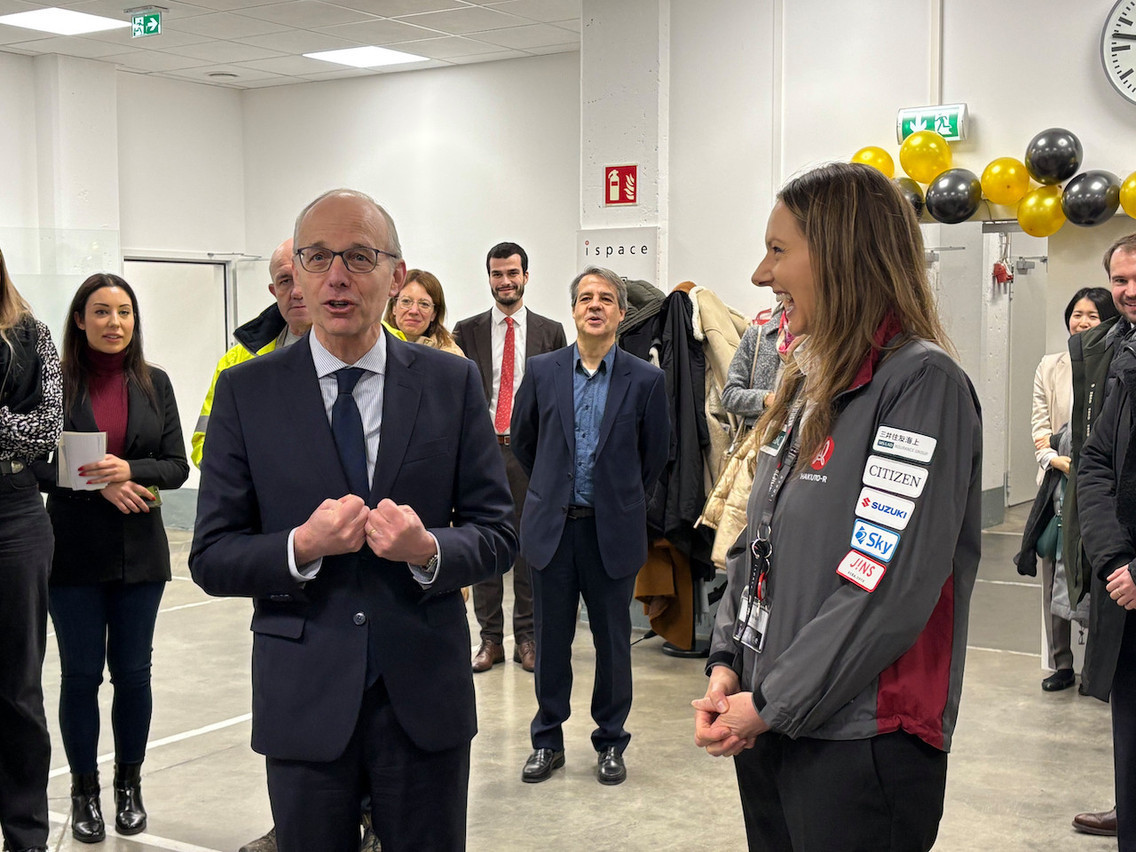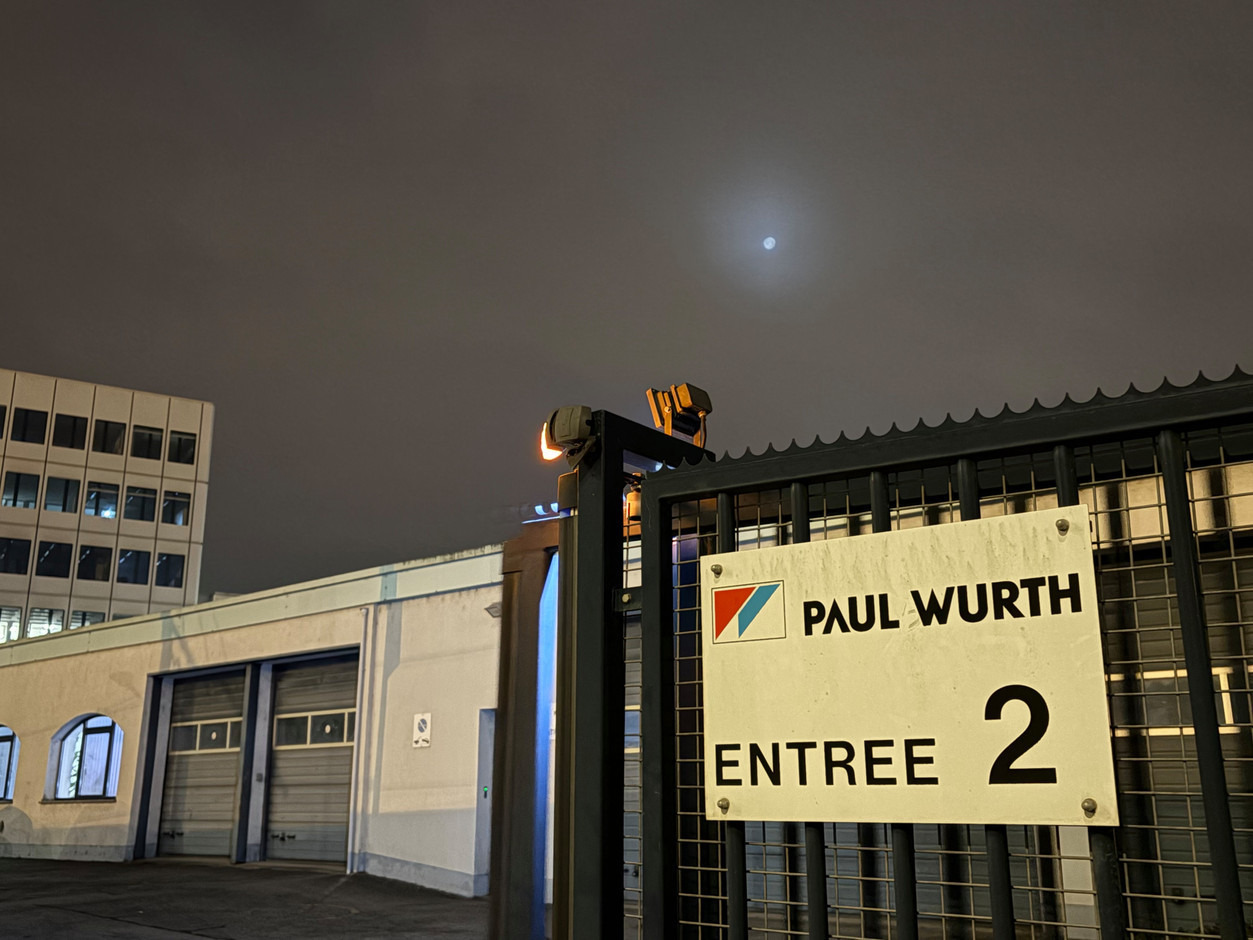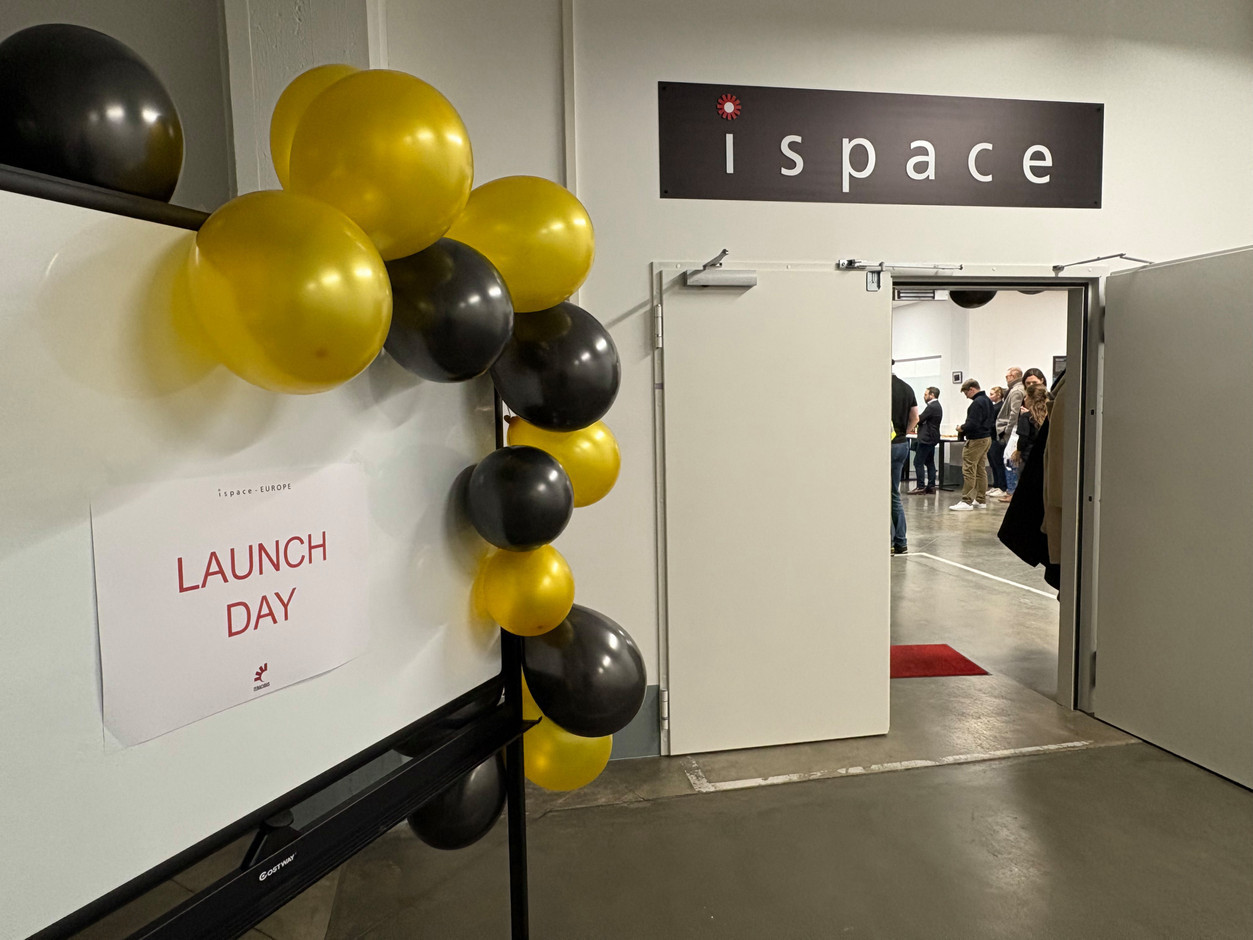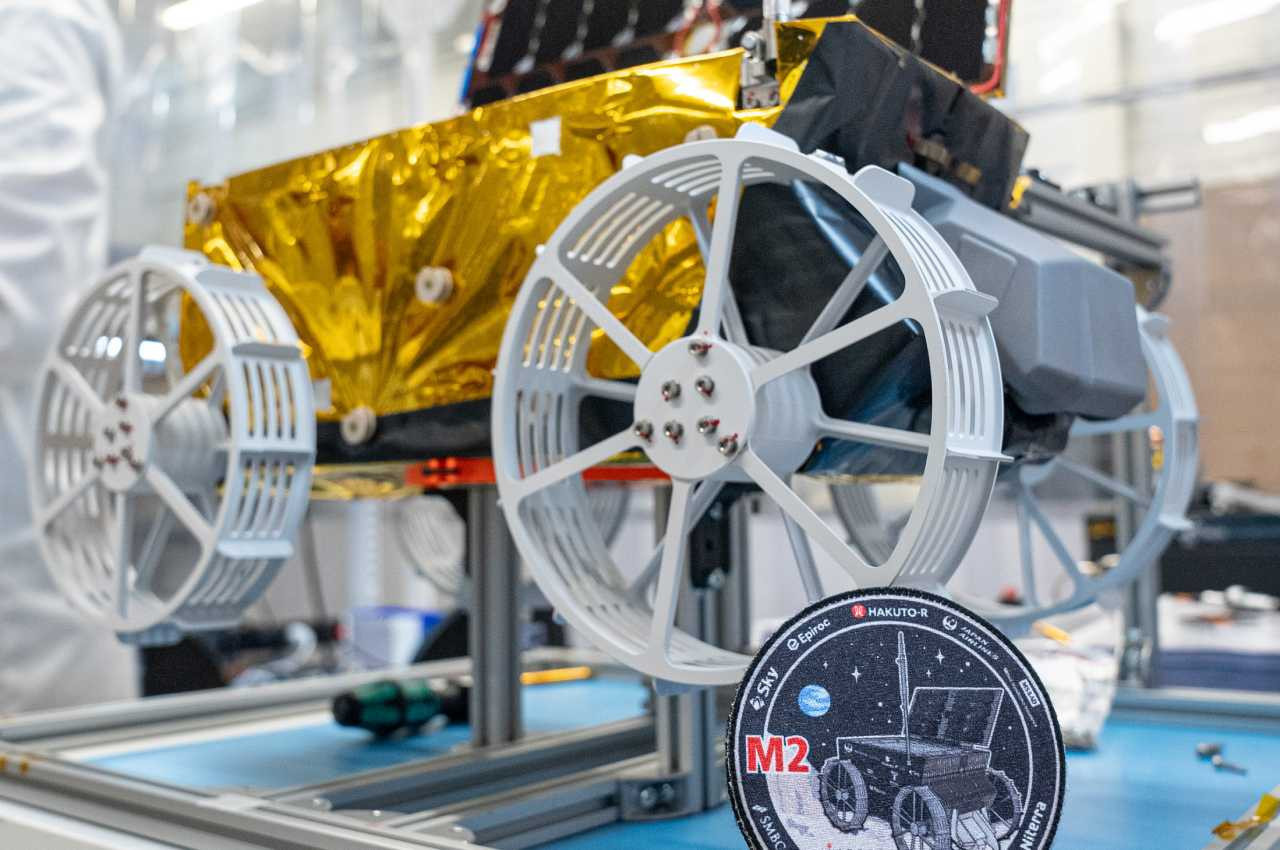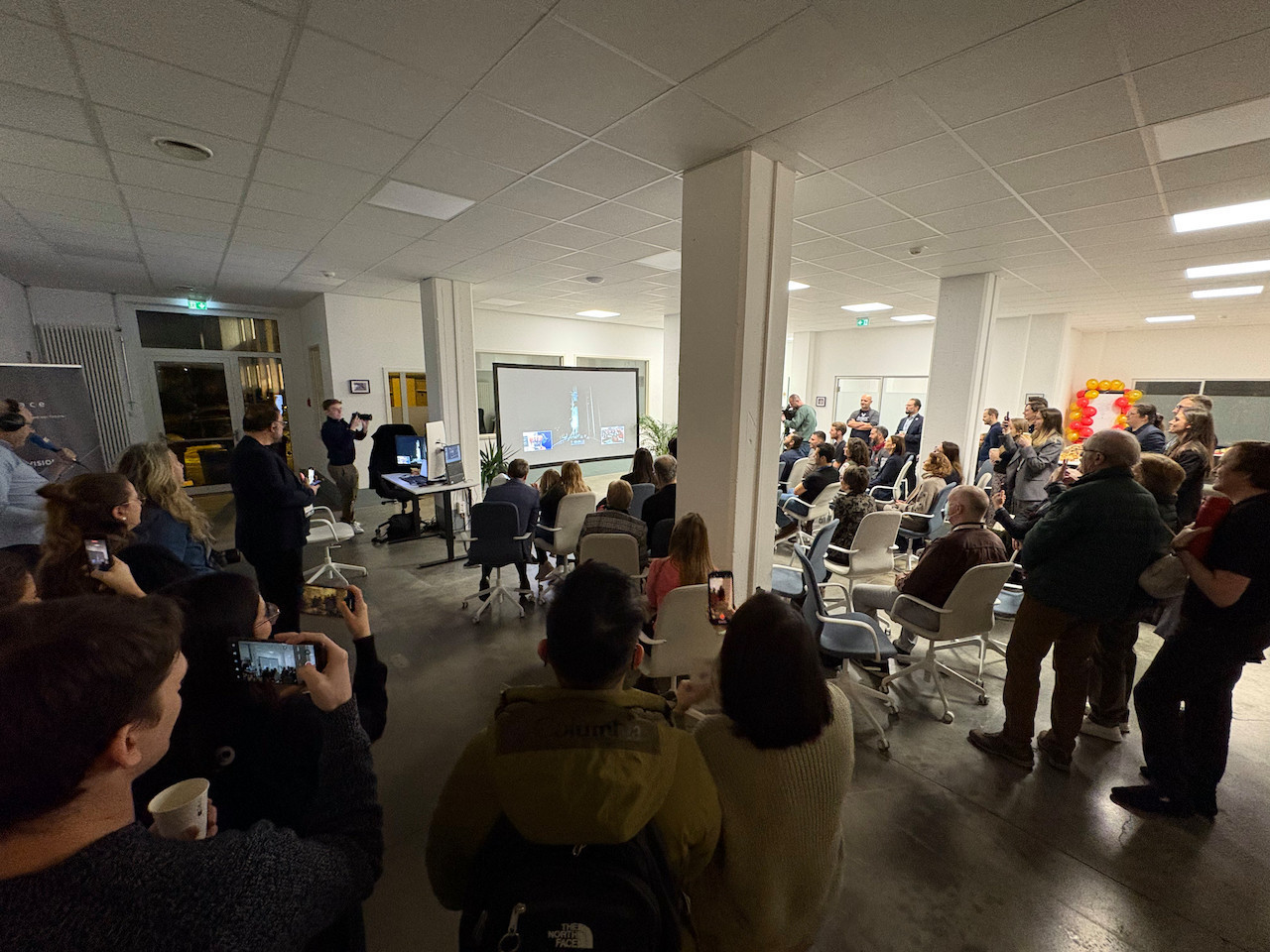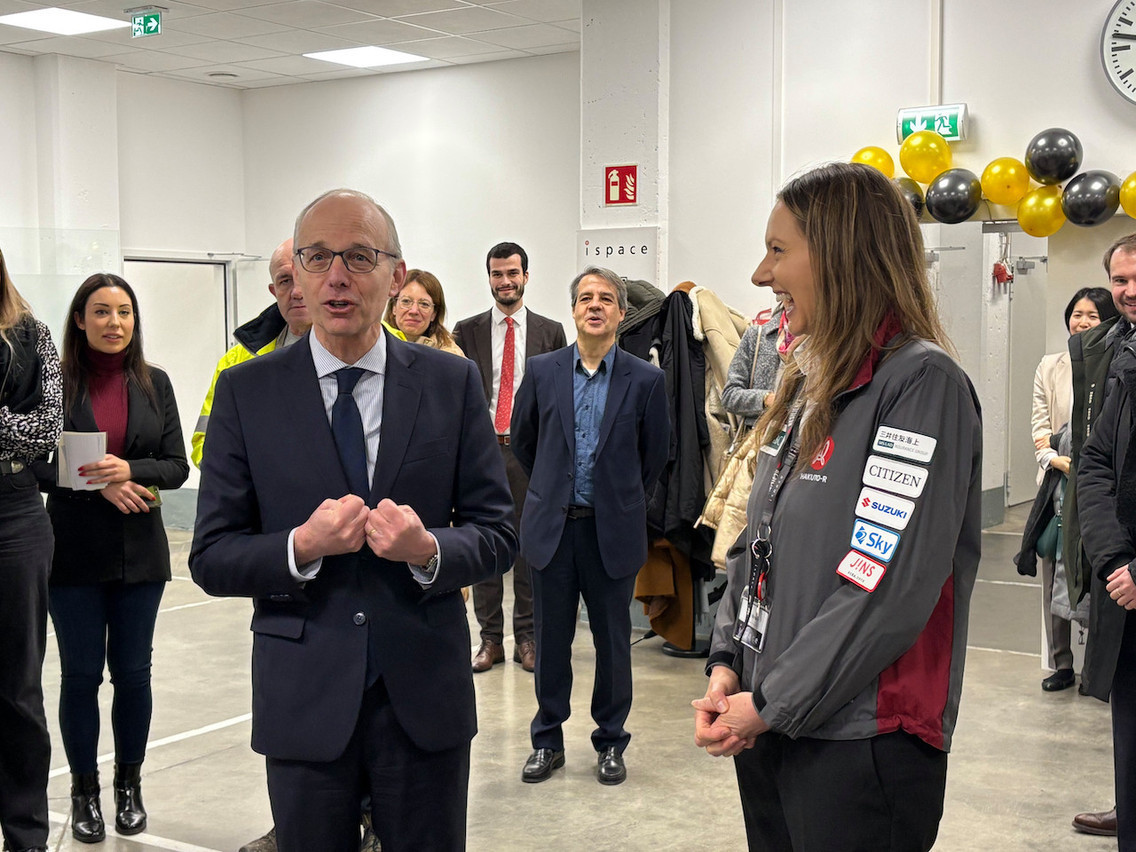9:03am. This concludes our live, rolling coverage of the Ispace launch. We will have to wait to verify that the communication and everything is going well for the lander and the rover. Then, in four to five months, how the arrival on the lunar soil is going--the first important step--before possibly being able to fulfill its missions. The word ‘iteration’ takes on a particular meaning in space missions, since it is step by step that the Ispace team makes progress towards their ultimate goal: to extend the human presence beyond Earth by building the infrastructures that humans will need. Thank you for following this live coverage.
8:45am. “I congratulate you,” stated Luxembourg PM Luc Frieden. He then visited the Luxembourg (and therefore European) Ispace facilities, including its “sandbox” which allowed the lunar rover to be trained to face the obstacles it could encounter on the Moon. The PM then said: “It’s fascinating to see what you can do. With the support of Luxembourg and in collaboration with Japan. You are preparing the future of our societies, well beyond Earth. This is much more than a launch, it is important for humanity and we will continue to support Ispace and its future missions.”
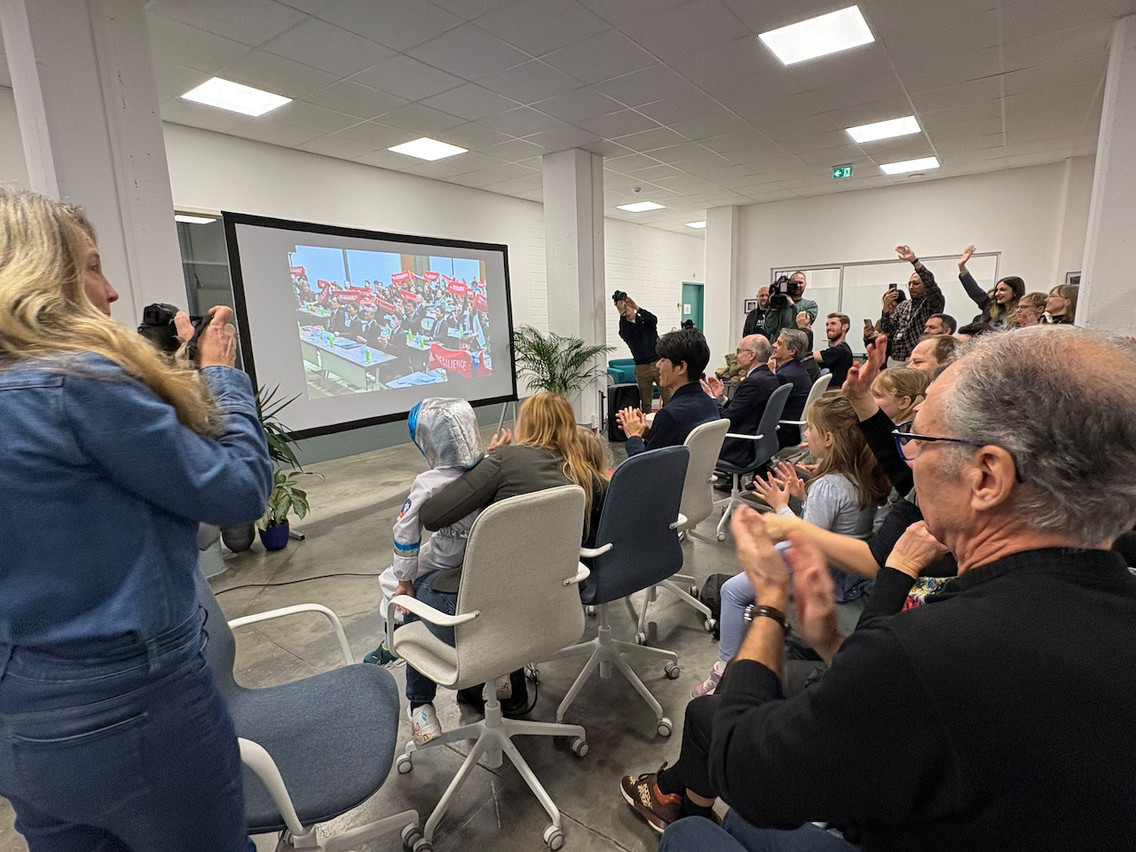
After the two missions successfully seperated, a brief teleconference with Ispace global HQ in Japan, attended by Luxembourg’s prime minister, Luc Frieden. Photo: Maison Moderne
8:40am. The separation of the two missions was successful and the Ispace module can go into orbit. For now, the engineers are busy checking that communication can be established and that everything is going well.
8:28am. On board the Resilience lunar lander, Ispace will also demonstrate its ability to carry customer cargo:
- Water electrolysis equipment: from Takasago Thermal Engineering Co.
- Food production experiment: an autonomous module from Euglena Co.
- Deep space radiation probe: developed by the Department of Space Science and Engineering, National Central University, Taiwan.
- Alloy commemorative plaque: developed by Bandai Namco Research Institute, Inc. and inspired by the “Charter of the Universal Century” from the Mobile Suit Gundam UC anime.
- Moonhouse: A model of a house by Swedish artist Mikael Genberg that will be mounted on the rover.
8:15am. As expected the prime minister has arrived at Ispace Luxembourg HQ. “I’m keeping my fingers crossed,” the PM told an enthusiastic audience, before receiving a briefing on the launch.
7:35am. The question on everyone's lips for laypeople is: "When will the rover reach the Moon?" Ispace has taken a different gamble than the other companies. It will seek a trajectory a million kilometres from the Moon to take advantage of its gravity and save fuel. The lander and rover should arrive within four to five months.
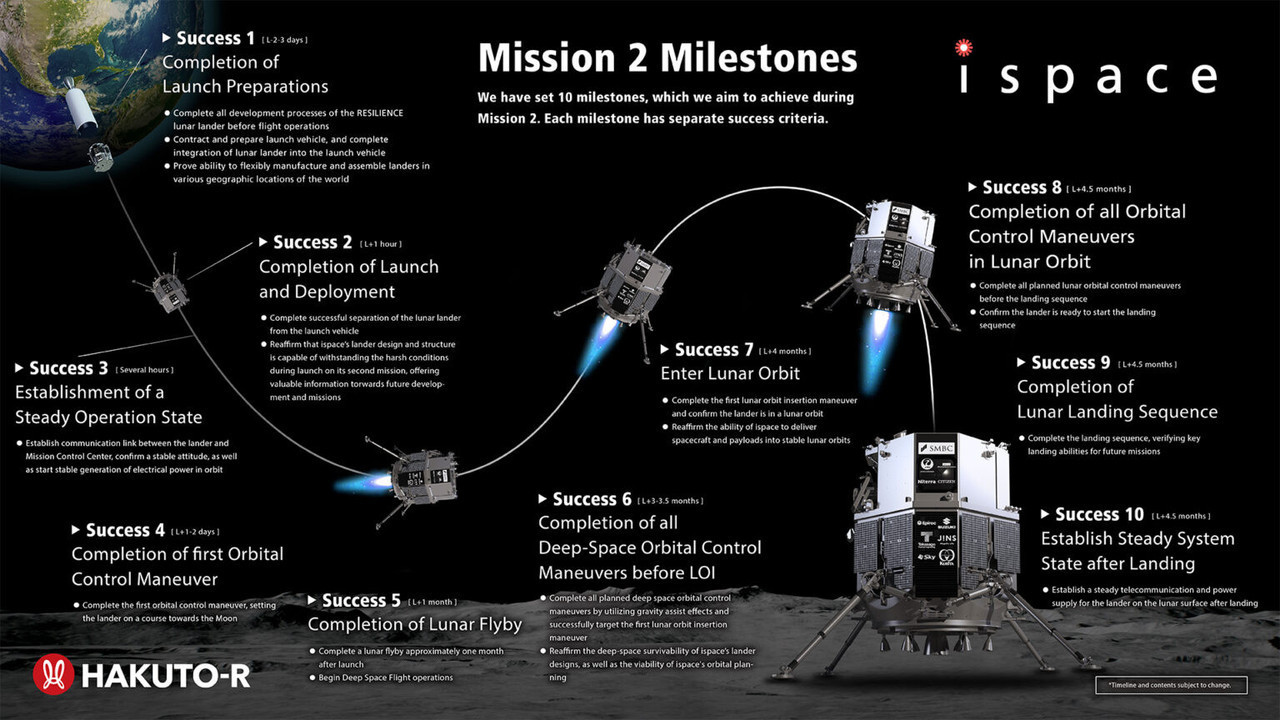
The mission will only be a success when all ten stages are completed. This Wednesday morning, only stages 1 to 3 are planned. Illustration: Ispace
7:30am. The tension is still palpable here in the Gare district. It’s natural: Ispace is not completely in control of its destiny. Not only is space an extremely complex field, but the company’s machines are in second position to be “liberated” and take their orbit towards the Moon. They’re behind the Blue Ghost spacecraft, developed by Firefly Aerospace, owned by the Ukrainian entrepreneur and philanthropist Max Polyakov. So everything will have to go well for the Firefly so that the Hakuto-R mission can continue its route to the Moon.
7:15am. After applause for the lift-off, the next expected sequence is the second rocket boost around 8:30am. The prime minister, (CSV), should arrive at this time to attend the second segment of the launch.
7:10am. Ten, nine, eight, seven, six, five, four, three, two, one… Go! Together attendees on Wednesday morning at the Ispace facilities at Paul Wurth’s site counted down the seconds before the SpaceX rocket lifted off from the ground. Direction: the Moon.
It was 25 April 2023, at 18:41 Luxembourg time. With just one minute to go before touching down on the Moon, the spacecraft was indicating an altitude of 740m and a speed of 126km/h, two parameters which then seemed to continue to approach zero. Until Hakuto-R stopped transmitting data.
On Wednesday, Ispace tried its luck again, again with SpaceX, with which it had signed a contract for two launches very early on. The Japanese company, one of the five finalists in the 2017-2018 Google X Prize, hopes to send its new lunar lander, Resilience, to the Moon, and that the rover designed, built and manufactured in Luxembourg, Tenacious, will finally be able to recover some lunar regolith. 5 kilos, 26 centimetres high, 31.5 centimetres wide and 54 centimetres long, built from carbon fibre-reinforced plastic, the Luxembourg rover is equipped with an HD camera and a shovel.
In 2016, Japan's top industrialists contributed the first $90m of the $500m raised to date for these slightly mad engineers, who dreamed of going to the Moon and building an embryonic civilisation there by 2040. Well, 2040 seems a rather ambitious target, but Ispace is still dreaming of being the first private company to land on the Moon after the United States and China.
Ispace arrived in Luxembourg in 2017, under the impetus of the former economy minister Étienne Schneider, and was visited once again last summer by Grand Duke Henri, as a sign of Luxembourg's attachment to this company, which is housed in the Paul Wurth startup incubator. Its local operations are led by Julien Lamamy, its former chief engineer, who earned a master’s in Lyon and PhD at MIT. Lamamy arrived in Luxembourg in May 2017 after a spell at Nasa's Jet Propulsion Laboratory and then Orbital ATK.
Read the original French-language version of this news report /
